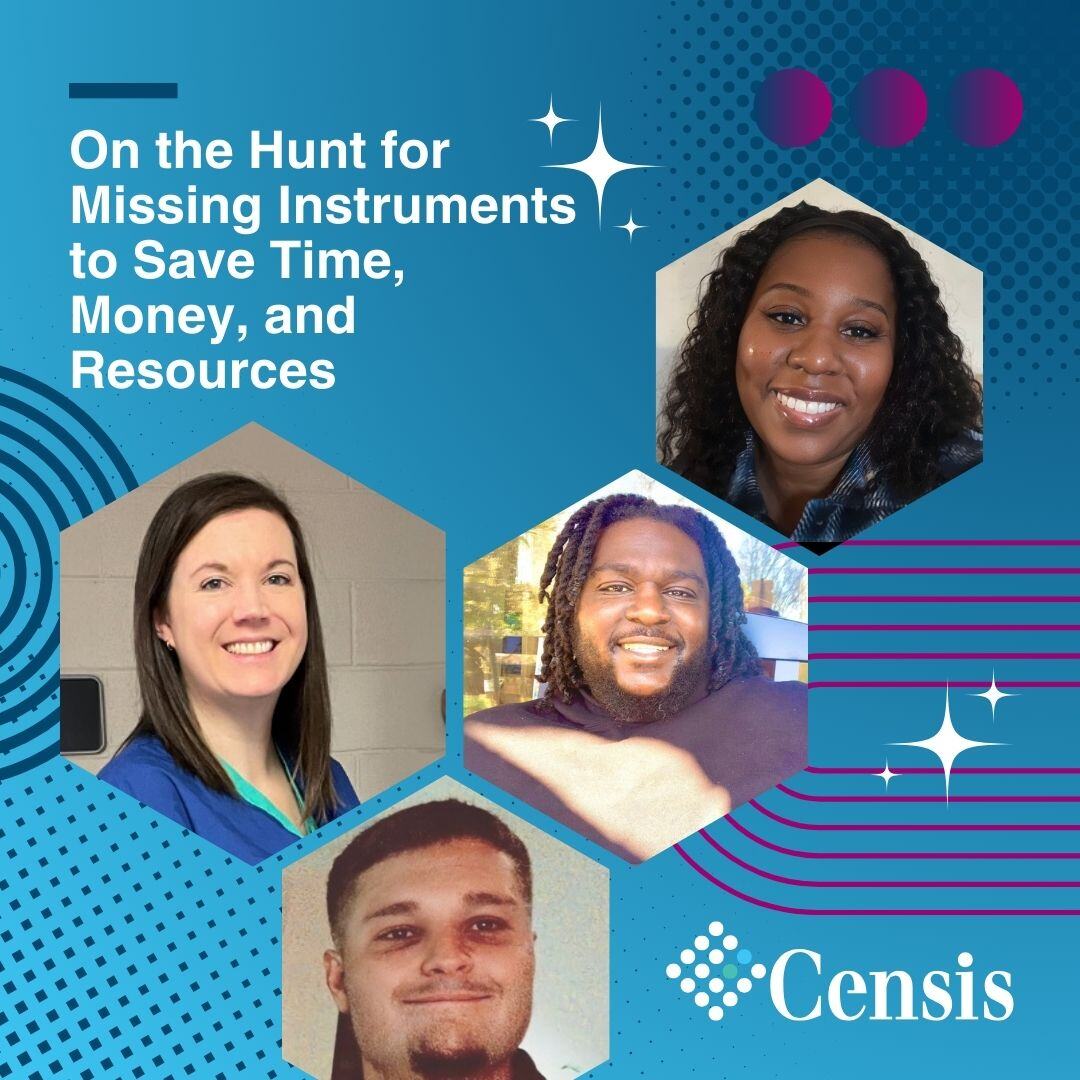Objectives:
- Identify what areas you should focus on to solve missing instrument problems.
- Learn from other sterile processing professionals about the challenges of missing instrumentation and how to solve them and achieve greater collaboration with other departments.
- Understand how data driven best practices can help you save time and money around missing instrumentation.
CaroMont Health, like many healthcare facilities, struggled with the recurring issue of missing surgical instruments, leading to financial loss and operational inefficiencies. Initially relying on traditional tracking methods, they faced constant frustration and strain on their sterile processing team. The adoption of their instrument tracking system, CensiTrac, marked a significant improvement, and further enhancement came with the implementation of the CensisAI2 Instrument Recovery.
The Challenge of Missing Instruments
CaroMont Health, like many healthcare facilities, faced significant challenges with missing surgical instruments. The frustration was palpable when essential instruments were missing from vital trays just as a patient was prepped for surgery. The same instruments often disappeared repeatedly, leading to costly replacements and inter-departmental tensions over responsibility.
Before adopting a solution, CaroMont relied on traditional, often inefficient methods. Missing instruments were a constant headache, and the sterile processing team frequently felt the strain. This sense of loss was not only financial but also impacted operational efficiency and patient care.
Transition to a Modern Solution
The transition from paper-based tracking to CensiTrac marked a significant leap in process efficiency for CaroMont. Implementing CensiTrac required overcoming initial hurdles, such as teaching staff computer literacy and integrating new processes into their daily routines. Despite these challenges, the team was committed to leveraging technology to address their persistent problems with instrument tracking.
In January 2024, CaroMont Health adopted CensisAI2 Instrument Recovery. This advanced tool offered a clear, data-driven solution to their issues, allowing them to track instruments more effectively and eliminate the guesswork that had previously plagued their operations.
The Benefits of AI-Powered Instrument Recovery
The CensisAI2 solution provided CaroMont with several immediate benefits:
- Precision Tracking: The team could pinpoint exactly where and when instruments went missing. This precise tracking extended down to the specific room, time, and personnel involved, allowing for targeted interventions.
- Data-Driven Accountability: With clear data, the team could hold staff accountable without finger-pointing, providing concrete evidence to back up their findings and fostering a more collaborative environment.
- Cost Savings: Over seven weeks, the software helped recover 515 instruments, translating to over $20,000 in savings by recovering lost instruments and avoiding unnecessary replacements.
- Improved Processes: Staff quickly adapted to the new system, incorporating the additional steps into their workflow seamlessly. This efficiency was boosted by a sense of competition and pride in their contributions to cost-saving efforts.
- Enhanced Communication: The tracking system facilitated better communication and cooperation between departments. The sterile processing team, OR staff, and materials management all worked together more effectively, leading to improved patient safety and care.
A Spirit of Continuous Improvement
Despite these successes, there is always room for improvement. The CaroMont Health team continues to refine their processes and address the root causes of instrument loss. They also focus on educating staff and fostering a culture of accountability and continuous improvement.
The team regularly reviews data from the CensisAI2 dashboards to identify trends and areas for further enhancement. This ongoing analysis helps them stay ahead of potential issues and continuously improve their instrument recovery processes.
A Model for Other Facilities
CaroMont Health’s experience with CensisAI2 Instrument Recovery offers valuable insights for other healthcare facilities facing similar challenges. The key takeaways include:
- Embrace Technology: Transitioning to an electronic tracking system can significantly improve efficiency and accuracy in managing surgical instruments.
- Leverage Data: Use data to drive accountability and informed decision-making, reducing the reliance on subjective feelings and assumptions.
- Foster Collaboration: Encourage inter-departmental cooperation to ensure comprehensive solutions and improved patient care.
- Invest in Training: Equip staff with the necessary skills and knowledge to use new systems effectively, ensuring a smooth transition and sustained success.
CaroMont Health’s journey illustrates the transformative impact of adopting advanced technologies like CensisAI2 Instrument Recovery. By embracing innovation and fostering a collaborative, data-driven culture, healthcare facilities can overcome persistent challenges, achieve significant cost savings, and enhance overall patient care.
Are you curious to hear the whole story? Listen to the CaroMont team on our ConCensis podcast.
Take the Quiz to Receive Your CE Credits!

